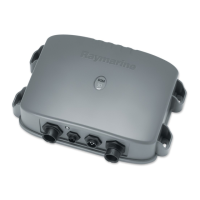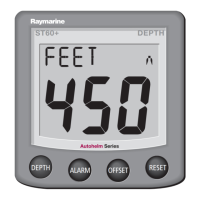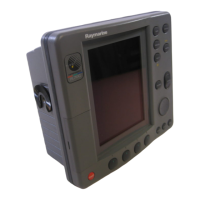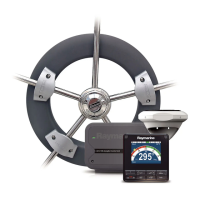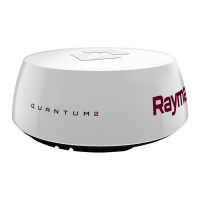Chapter 2: Transducer Installation 51
3. Tape the trans du cer to a po le with t he ca ble s ide up. Hold i t ov er th e sid e of the
boat with the active face submerged in the water (see Figure 2-18 ). Keep the
active face of the transducer parallel to the surface of the water.
4. Observe the sounder’s performance and depth reading.
Figure 2-18: Establishing a Performance Baseline
Testing the Mounting Location
While the boat is moving around the same site (and depth of water), test the
transducer at your selected mounting location inside the hull. Use one of the
methods below:
1. This method is recommended if the sensor will be located near the stern and
the boat has a minimum deadrise angle.
i. Clean away any large build-up of dirt and/or grease using detergent or a
weak solvent such as alcohol.
ii. Place the sensor against the hull and allow bilge water to cover the sur-
face where they touch (see Figure 2-19 A).
CAUTION:
Always wear safety goggles and a dust mask.
2. This method can be used at all hull locations.
i. If the hull surface is not smooth, grind it with a disc sander.
ii. Partially fill a thin plastic bag with water, place the sensor inside the bag
and close it tightly with a twist-tie.
iii. Wet the surface of the hull and press the sensor face against it through the
bag (see Figure 2-19 B).
3. This is the least desirable testing method, as it may be difficult to remove all
traces of the petroleum jelly before bonding the base to the hull.
i. If the hull surface is not smooth, grind it with a disc sander.
ii. Coat the face of the sensor with petroleum jelly.
D5000-2
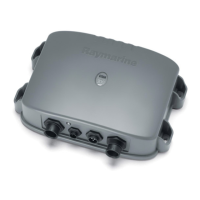
